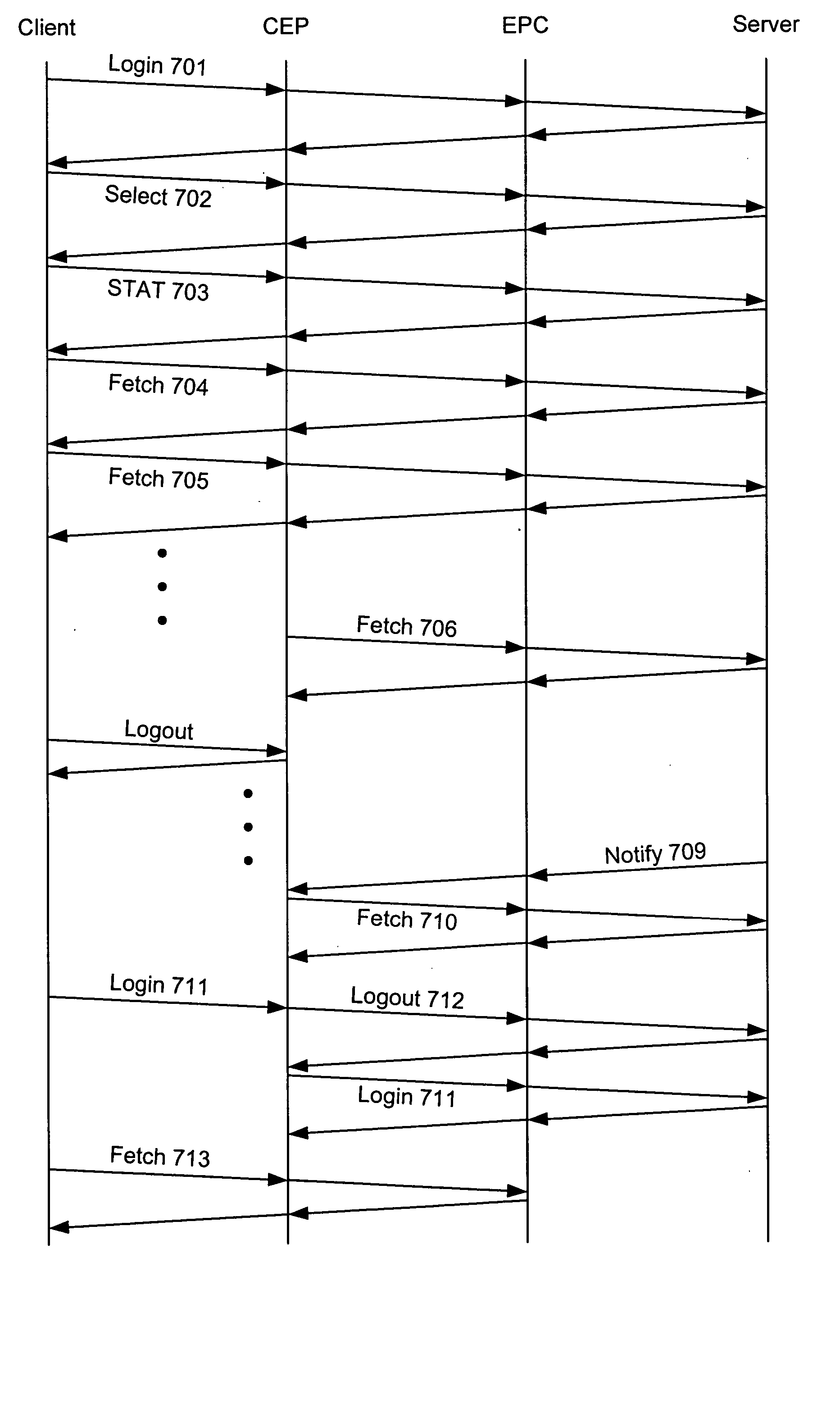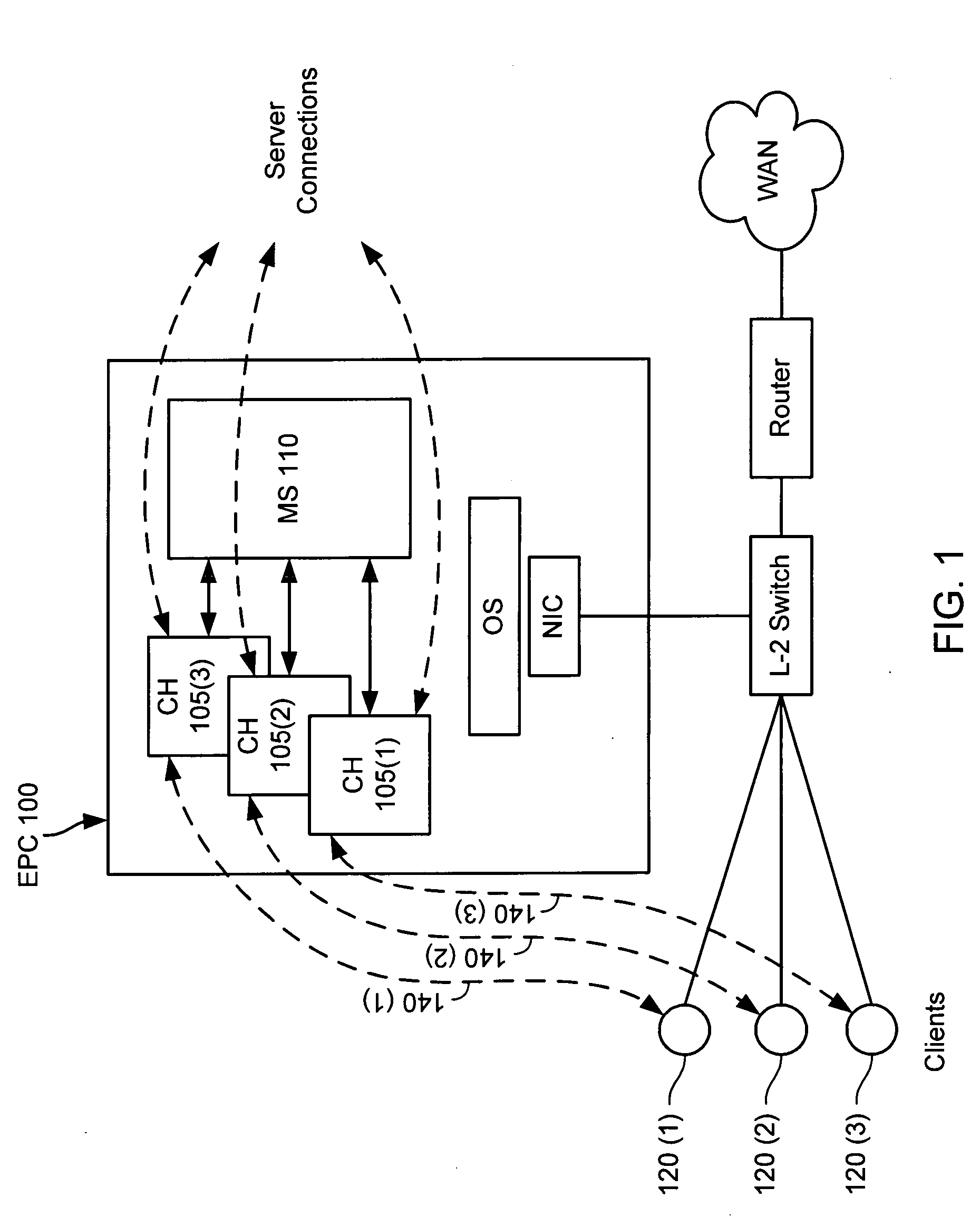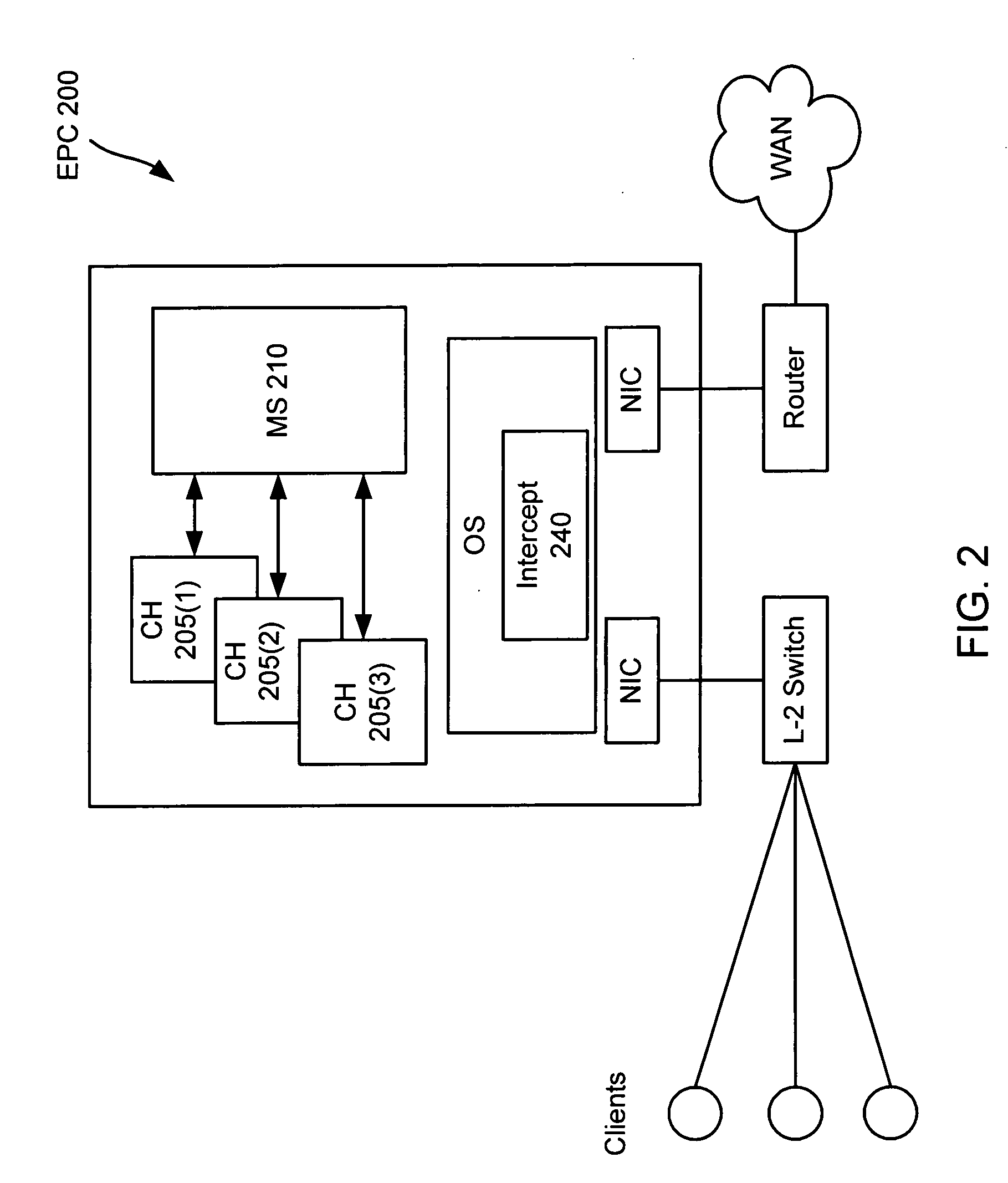Content delivery for client-server protocols with user affinities using connection end-point proxies
a client-server protocol and content delivery technology, applied in the field of data transport over networks, can solve the problems of long data transfer, interference with the productivity of end users, and performance bottlenecks,
- Summary
- Abstract
- Description
- Claims
- Application Information
AI Technical Summary
Problems solved by technology
Method used
Image
Examples
Embodiment Construction
[0032] The present invention has many applications, as will be apparent after reading this disclosure. In describing an embodiment of a content delivery system according to the present invention, only a few of the possible variations are described. Other applications and variations will be apparent to one of ordinary skill in the art, so the invention should not be construed as narrowly as the examples, but rather in accordance with the appended claims.
[0033] A transaction, as the term is used herein, is a logical set of steps that result in data moving from one place to another. In some cases, the data being moved exists at its origin independent of the transaction, such as a file read transaction where the file exists on the disk of the server. In other cases, the data is generated for the transaction at the origin, such as in response to a request for computation, lookup, etc. Typically, the computer, computer device, etc., initiating the transaction is referred to as the “clien...
PUM
 Login to View More
Login to View More Abstract
Description
Claims
Application Information
 Login to View More
Login to View More - R&D
- Intellectual Property
- Life Sciences
- Materials
- Tech Scout
- Unparalleled Data Quality
- Higher Quality Content
- 60% Fewer Hallucinations
Browse by: Latest US Patents, China's latest patents, Technical Efficacy Thesaurus, Application Domain, Technology Topic, Popular Technical Reports.
© 2025 PatSnap. All rights reserved.Legal|Privacy policy|Modern Slavery Act Transparency Statement|Sitemap|About US| Contact US: help@patsnap.com



